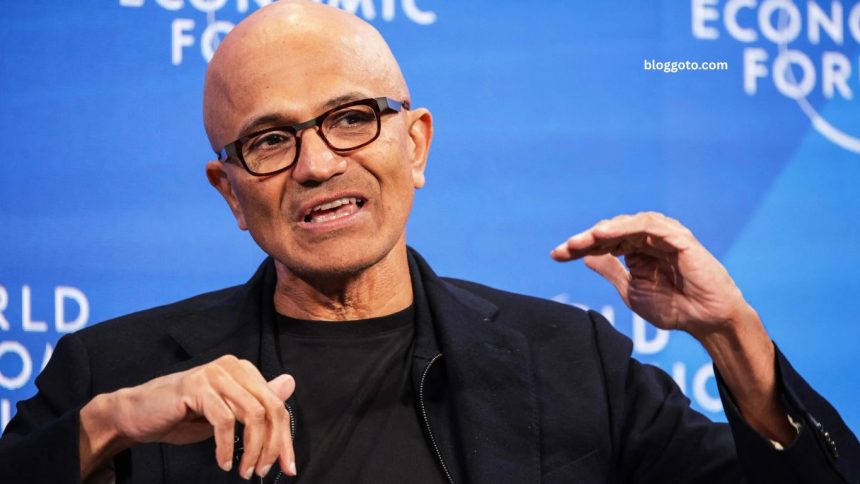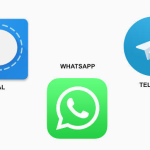Microsoft CEO Satya Nadella emphasized the importance of returning to the office during a recent all-employee town hall, framing it as a key driver of innovation and collaboration. According to Nadella, in-person interactions foster creativity, strengthen team dynamics, and accelerate problem-solving elements critical for maintaining Microsoft’s competitive edge.
While remote work has offered flexibility, the CEO argued that specific collaborative processes and spontaneous idea exchanges thrive best in a shared physical environment. Nadella’s message reflects a broader industry trend, as tech companies balance the benefits of hybrid work with the need for direct collaboration. Employees are encouraged to embrace the shift as a strategic move to enhance innovation, productivity, and long-term company growth.
Why Microsoft Is Returning to the Office
In a company-wide town hall, Nadella stressed that physical presence in the workplace strengthens relationships, which are essential for innovation. He explained that in-person connections help maintain both existing strong ties and weaker professional ties, which can easily diminish in remote settings. He emphasized that new ideas and cross-team collaborations often emerge spontaneously in physical workspaces, moments that are difficult to replicate online.
Microsoft’s leadership believes that returning to the office allows employees to engage in these spontaneous interactions, share knowledge more effectively, and build the social capital that drives innovation across teams. Nadella framed the mandate not as a restriction, but as a strategic tool to enhance creativity and ensure the company remains competitive in the fast-evolving tech landscape.
Read More: eBay CEO: Your Home May Hold $4,000 in Items You Can Sell
Data Supporting In-Person Collaboration
Microsoft has conducted internal studies showing that employees who spend at least three days a week in the office report higher energy levels, greater engagement, and stronger collaboration with peers. These employees often feel more empowered and connected to the company’s mission, which in turn contributes to higher productivity and innovation.
The company’s Chief People Officer highlighted that team dynamics improve when employees collaborate face-to-face, allowing for richer discussions, quicker decision-making, and a greater sense of shared purpose. While remote work provides flexibility, it can limit these organic interactions that fuel creativity and problem-solving.
Phased Implementation of the RTO Policy
The return-to-office policy will be rolled out in phases, starting with employees located within close proximity to Microsoft’s main offices. Employees in the Puget Sound area, within 50 miles of headquarters, will be among the first required to adhere to the mandate. Subsequent phases will extend to other U.S. locations and eventually international offices.
Employees with exceptional circumstances, such as long or complex commutes or a lack of team presence at a local office, can apply for exemptions. These measures are designed to accommodate unique situations while maintaining the overall goal of fostering in-person collaboration.
The Role of Remote Work Tools
Microsoft acknowledges that tools like Teams and other remote work solutions are valuable for communication and collaboration. However, leadership emphasizes that these tools cannot fully replicate the nuances of face-to-face interactions. Serendipitous conversations, immediate feedback, and the kind of spontaneous brainstorming that leads to breakthrough ideas are often lost in fully remote setups.
By returning to the office, Microsoft aims to combine the benefits of technology with the irreplaceable advantages of human presence. The company continues to invest in hybrid solutions but views physical collaboration as central to sustaining long-term innovation.
Addressing Employee Concerns
Microsoft recognizes that the RTO mandate may raise concerns among employees who have grown accustomed to remote work. Nadella acknowledged that the company has areas for improvement, particularly in empathy and trust-building with employees, and committed to addressing these gaps.
Leadership has emphasized that the goal is not to limit flexibility but to create environments that support collaboration, creativity, and growth. By listening to employee feedback, providing options for exemptions when justified, and offering supportive workplace resources, Microsoft aims to ease the transition while maintaining morale and engagement.
Industry Trends and Broader Implications
Microsoft’s decision aligns with a broader trend in the tech industry, where companies are seeking to strike a balance between remote flexibility and the benefits of in-person collaboration. Many firms have observed that hybrid or fully remote work models can impact innovation, knowledge sharing, and team cohesion.
By implementing a structured return-to-office approach, Microsoft is signaling the importance of workplace culture in driving innovation and sustaining competitive advantage. The company’s strategy reflects a careful consideration of both employee needs and the organizational benefits of face-to-face collaboration.
Benefits of the Return-to-Office Mandate
- Enhanced Collaboration: Teams can brainstorm, solve problems, and innovate more effectively when interacting in person.
- Stronger Relationships: Physical presence fosters social connections that strengthen professional networks.
- Increased Engagement: Employees report higher energy and a stronger sense of purpose when working alongside peers.
- Improved Creativity: Serendipitous discussions and spontaneous feedback are more likely in office environments.
- Long-Term Innovation: By facilitating collaboration, Microsoft aims to maintain its competitive edge and support sustainable growth.
Challenges and Considerations
While the RTO mandate has clear advantages, the company also faces challenges in implementation. Some employees may resist the change, particularly those accustomed to fully remote schedules. Leadership must carefully manage employee expectations, provide clear communication, and ensure that the transition does not negatively impact morale.
Additionally, the policy requires logistical planning, including office space management, commute considerations, and accommodations for hybrid work arrangements. Microsoft’s phased approach and exemption policies are designed to address these challenges while maintaining the overarching goal of enhancing collaboration and innovation.
Employee Engagement and Company Culture
Beyond collaboration, the return-to-office mandate is seen as a way to reinforce Microsoft’s company culture. Face-to-face interactions allow for mentoring, team-building, and more substantial alignment with organizational values. Employees have the opportunity to engage more deeply with leadership, participate in workshops, and attend events that nurture professional growth.
Nadella’s approach emphasizes that company culture is not just about work policies, but about creating an environment where employees feel connected, supported, and motivated to contribute their best ideas. Returning to the office is part of a larger strategy to sustain this culture and ensure long-term success.
Frequently Asked Questions
Why is Microsoft implementing a return-to-office mandate?
Microsoft’s CEO Satya Nadella believes in-person collaboration is essential for innovation, creativity, and team cohesion. While remote work offers flexibility, specific spontaneous interactions and problem-solving opportunities thrive best in a shared physical environment.
Who is affected by the return-to-office policy?
The policy will be rolled out in phases, starting with employees located near Microsoft offices, particularly in the Puget Sound area. Later phases will include other U.S. offices and international locations. Exemptions are available for specific circumstances.
When will the return-to-office mandate begin?
The first phase of the mandate is scheduled to start in February 2026, with subsequent phases extending to other offices over time.
Can employees request exemptions from the mandate?
Yes, employees with valid reasons, such as long commutes or a lack of team presence at a local office, can apply for exemptions. The company encourages employees to submit exemption requests by the designated deadline.
How does Microsoft justify this policy despite remote work tools?
Microsoft CEO acknowledges that remote tools like Teams are practical for communication. Still, they cannot replicate the in-person interactions, spontaneous discussions, and creative problem-solving that occur naturally in office settings.
What benefits does Microsoft expect from employees returning to the office?
The company anticipates enhanced collaboration, stronger relationships, higher engagement, improved creativity, and ultimately greater innovation and productivity.
How is Microsoft CEO addressing employee concerns about returning to the office?
Leadership emphasizes empathy and trust, offering exemption options and support resources. The company is committed to clear communication and facilitating a smooth transition to maintain morale and engagement.
Conclusion
Microsoft’s CEO return-to-office mandate reflects the company’s commitment to fostering innovation, collaboration, and a strong workplace culture. While remote work has provided flexibility, leadership emphasizes that in-person interactions are vital for creativity, team cohesion, and spontaneous problem-solving.











